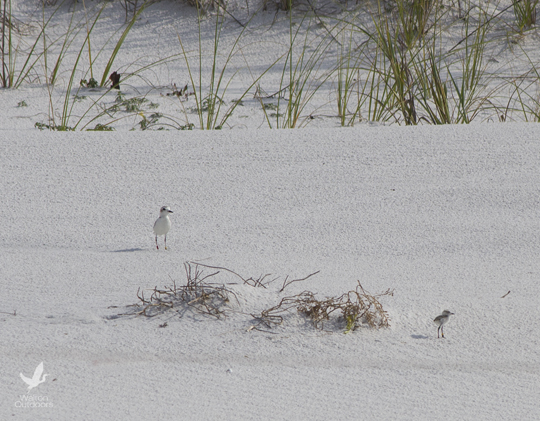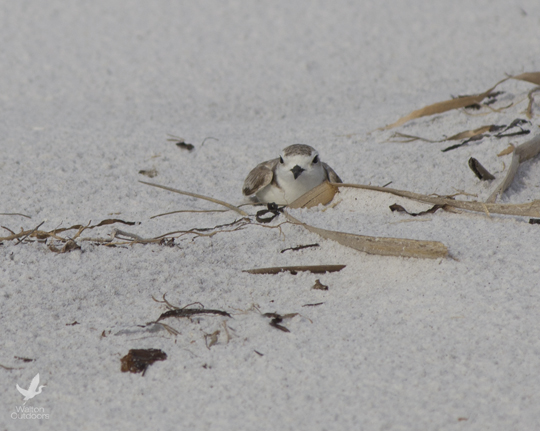
As we enjoy our wonderful beaches in South Walton, many visitors and locals are not aware that we are sharing vital habitat for a variety of shorebirds. Our dune systems and coastal dune lakes provide perfect nesting areas and foraging habitat for a variety of species such as sandpipers, gulls, terns, and wading birds. One tiny species is the small, sandy colored snowy plover. The snowy plover (Charadrius nivosus) can be found year round along our beaches in Northwest Florida. Each spring, and early summer these beautiful little birds nest and rear young along our coastlines.
This year has been a special one for Topsail Hill Preserve State Park. Snowy plovers have nested and hatched two chicks. This the first time a nest has made it to hatching in 10 years. As of Aug. 2, they are doing well and foraging along the dune line.

The mother has a documented history nesting in south Walton. The banded female was originally was banded in 2013 at Grayton Beach State Park shortly after she successfully hatched 3 chicks. She paired up with and bred with a male at Grayton, who was banded in 2012. She successfully fledged one chick from her nest at Grayton Beach State Park in 2013. That fledgling is a female and is now nesting nearby at Eglin AFB.
She made early attempts this 2014 season to nest at Deer Lake State Park. However, coyote and other predator pressures were too high for successful nesting.
Snowy plovers are a threatened species according to Florida Fish and Wildlife Conservation Commission, due to their small population size (222 breeding pairs in the most recent State-wide census). The biggest threat to the plover is human factors such as recreation and development, along with coyote, domestic dog, fox, fish crow, laughing gull, gull-billed tern, great blue heron, raccoon, opossum, bobcat, and feral domestic cats. It is with great challenges that snowy plovers manage to fledge their young.
Fortunately our Florida State Parks are the perfect host for these shorebirds. With preserved beach areas, chances of survival for snowy plovers and other shorebirds is good, and the only place left these birds have for a chance to thrive.
